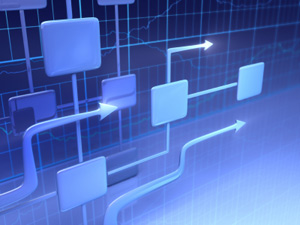 What does the future of mind mapping software look like?
What does the future of mind mapping software look like?
Based on the surveys I have conducted of the users of mind mapping software, plus numerous conversations with developers of visual mapping tools, here are some of the essential features and functionality that should be incorporated into tomorrow’s mind mapping software:
1. Integrated desktop/web experience: Users of mind mapping applications should be able to access and edit their maps anywhere, via a combination of desktop and web-based software. In order to be effective, this process will need to work seamlessly, with both sets of tools sharing a similar interface and toolset. The model for this, of course, is Google Docs, which can be utilized offline using Google Gears. You can work on a document offline, and when you’re once again connected to the Internet, the offline files are automatically synchronized to your online file repository. It’s simple and easy, and doesn’t require the user to do anything special. It just works!
2. Make attachments and web pages viewable within the mind mapping program: External resources, such as documents, spreadsheets, presentations, web pages and other files should viewable within the interface of the mind mapping program, so you can view their contents without having to open other applications. Viewing them in context will help you to maintain your creative “flow” better than the current, disjointed experience. In short, the mind map needs to become more of a “knowledge hub” where information can be gathered, manipulated and analyzed, without having to rely on third party programs as file viewers.
3. More robust database connections: Tomorrow’s mind mapping software needs to be able to connect (with appropriate security, of course) to corporate CRM, MRP and other databases to pull selected data into your maps. This would be especially valuable for “dashboard maps,” which consolidate a variety of disparate but important data into one visual map.
4. Dynamic connections with search engines, social media and other web 2.0 tools, such as StumbleUpon, Twitter, Facebook, Digg and Delicious: A lot of content and ideas are contained in these next-generation online tools. Users of tomorrow’s mind mapping software programs need to be able to pull selected content into their maps. One practical example: It would be valuable if users could easily search for images to add to their maps, from within the mapping program itself. In addition, groups of like-minded users can help us to filter information and manage attention more productively – helping us to find the most important “stuff” in a maelstrom of information. Tomorrow’s mind mapping tools will be able to pull more of this “social intelligence” into visual maps, and enable us to be more selective and productive in the information to which we devote our attention.
5. File content search: The ability to search not only a mind map’s topics and sub-topics, but also the full contents of any attached files, such as Word documents and PDF files.
6. Improved collaboration: Users of mind mapping software should be able to share the full contents of their maps with their teammates and colleagues, without the need for each person to have a full licensed copy of the software or a file viewer – which doesn’t permit others to edit or annotate your maps. As long as only a handful of people within an organization have access to mind mapping software, it will never realize its full potential as a productivity tool.
7. Enabling the shift from information to attention: Nova Spivak, in a great guest post on the ReadWriteWeb blog, predicts that as “content creation and distribution become almost infinitely cheap, the scarcest resources will no longer be storage or bandwidth, it will be attention… In order to cope with the overwhelming complexity of our digital lives, we are going to increasingly rely on tools that help us manage our attention more productively — rather than tools that simply help us manage our information.” Tomorrow’s mind mapping software will be uniquely positioned to act as a semi-intelligent agent, helping users to focus on the most pertinent and important information.
What do you think the future of mind mapping software looks like? Please share your thoughts in the comments area below. I look forward to your prognostications!
If you liked this post, please subscribe to the RSS feed of this blog.

Leave a Reply